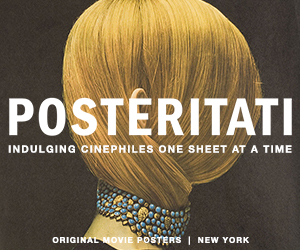“Is all this living really worth dying for?”
In the context of Soul, such a question—which sounds like a nonsensical bit of Alice in Wonderland wordplay—makes perfect sense. Co-directed by Pete Docter and Kemp Powers, from a screenplay by Docter, Powers, and Mike Jones, Pixar’s 23rd animated feature is an exercise in psychedelic existentialism that astonishingly increases in inventiveness as it goes along. Then, before you’re overwhelmed, it shifts into a lower gear, eventually arriving as a stirring and relatively simple meditation on what it means to be alive. I’d argue that “all this living” is worth it—if it means we get exhilarating, affirming movies such as this.
To appreciate the film’s achievement, you’ll need to follow me through a bit of plot (spoilers ahead). The main character in Soul is a jazz pianist and middle-school band teacher named Joe (voiced by Jamie Foxx), who at the start of the film gets the big break he’s been waiting for: a chance to sit in with a revered quartet. Before showtime, however, Joe tumbles into a New York City manhole and falls into a coma. We catch up with his soul—envisioned as a translucent, turquoise, Joe-shaped blob—in some sort of spiritual waystation, where he’s expected to ride a conveyor belt to the “Great Beyond.” Fleeing that fate, Joe meets a young soul named 22 (Tina Fey) who’s resisting her own predetermined destination: as a newborn human. Together, Joe and 22 try to cheat the system, but a mishap sends them both to Earth, where 22’s soul gets stuck in Joe’s body and Joe’s soul gets stuck in a cat.
The screenplay deftly navigates all of these developments, so that Soul never feels as confusing as that synopsis likely sounds. Dollops of humor keep things moving (I love the bug-zapper sound effect whenever a soul enters the Great Beyond; no wonder Joe is terrified), while also lightening the philosophical load. In fact, the first thing we hear is a clever joke: the Disney theme over the Magic Kingdom logo, but played in the off-key manner of a middle-school band warming up their instruments.
We first meet Joe in his classroom, where Foxx manages the resigned but resilient voice of any good band teacher, for whom a love of sharing music just barely manages to outweigh the insults of screeching brass. There’s a sweet interlude later in the film where Joe shares some encouragement with a student trombonist, and we can see that instruction, as well as execution, is one of his gifts.
The animation in these New York scenes is gorgeous—golden and crisp, to match the fall day on which much of the story takes place. It’s also refreshingly, culturally specific. From the jazz club Joe visits to the barbershop he goes to for an emergency trim (after he tries to use his paws to cut his own hair, in another great gag), most of the characters we meet are Black. Their particular cadences, fashion choices, and references all root the story in the real world, rather than the generic, White suburban America in which so many animated features are set.
As for the “unreal” world—that spiritual waystation—it’s a trippy, Tron-like environment, where spirit guides (all named Jerry) consist of squiggly lines that continually change their shape—something like Picasso sketches come to life. Echoing this bifurcated aesthetic is the score, which features lively original jazz compositions by Jonathan Batiste on Earth and, in the spiritual realm, futuristic beeps and bloops composed by Trent Reznor and Atticus Ross. The latter music is cleanly electronic, but playfully so, as if a computer was trying a jazz improvisation of its own.
As Joe and 22 try to remedy their body-swapped situation (with the help of a “mystic,” voiced by Graham Norton, who twirls advertising signs as his day job), 22 slowly comes around on the prospect of life on Earth. (Pizza, lollipops, and—yes—jazz all help). At the same time, Joe’s new, outside perspective on his own life—which 22 experiences as a series of small pleasures—makes him wonder if that gig he’s longing for will satisfy him in the way he hopes, or if happiness might be more complicated.
Soul ultimately suggests that our goal in life might not be to realize our dreams (an interesting proposition coming from someone as accomplished as Docter, whose Pixar credits also include Inside Out, Up, and Monsters, Inc.) Maybe life isn’t about attaining our individual desires, but in appreciating the common gifts we all share—“regular old living,” as a character puts it at one point. Getting to play in an esteemed jazz quartet is a beautiful thing. But so is the way a whirlybird maple seed—one of the film’s loveliest photorealistic images—floats this way and that, up and down, here and there, and—every once in a great while—delicately, miraculously, spins right into the palm of your hand.



